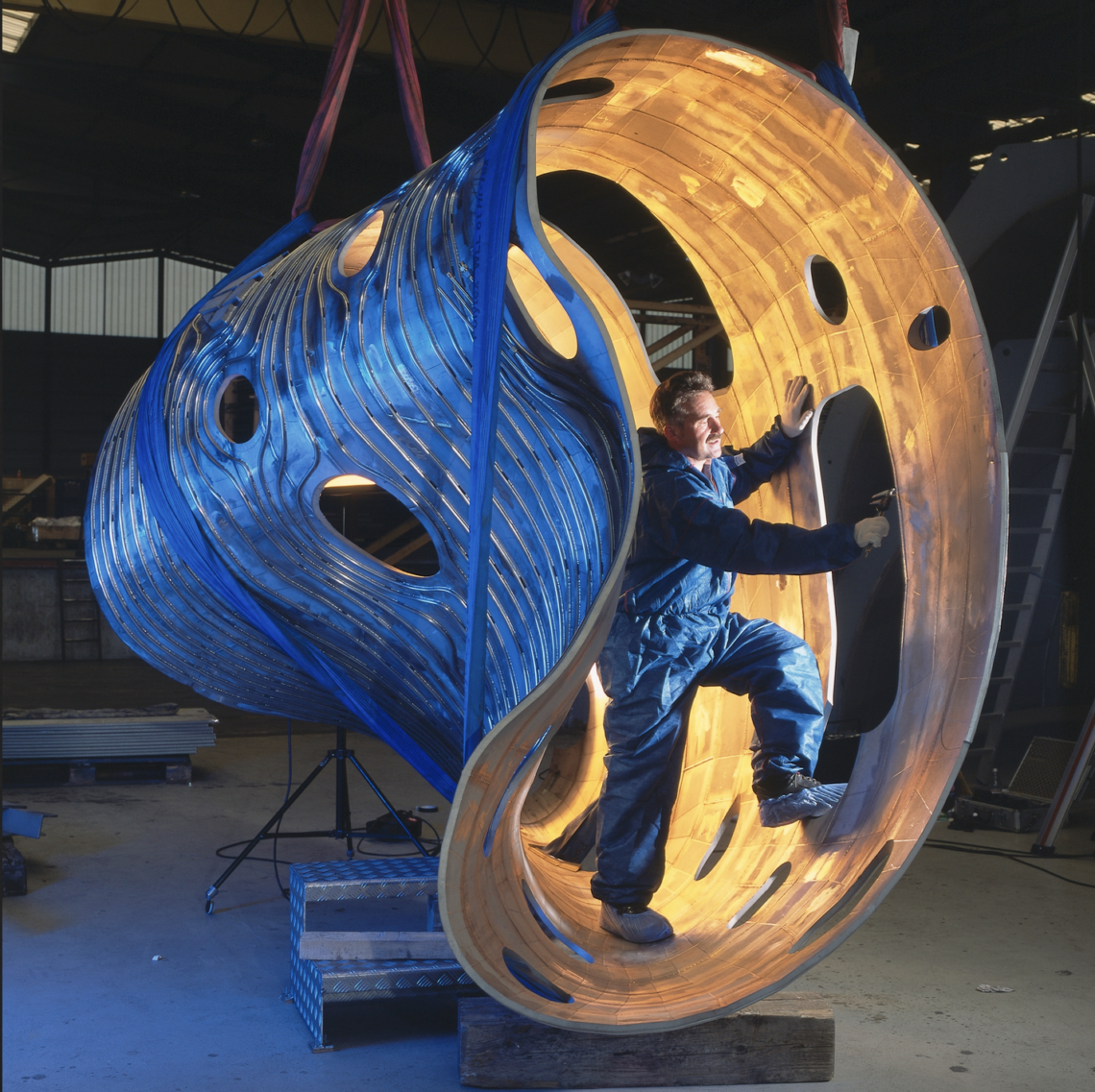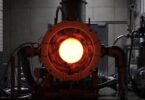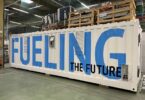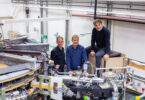Throughout the almost 100 years of its existence what is now called the Max Planck Society has hosted the work of many famous scientists including Albert Einstein and his mentor, Max Planck, who ushered in a new era of physics with quantum theory and the theory of relativity; Werner Heisenberg who is considered one of the fathers of quantum mechanics; and physicist and philosopher Carl Friedrich von Weizsäcker, who made important contributions to nuclear physics, energy generation by means of nuclear fusion in stars, and the theory of planet formation.
Now the Max Planck Institute for Plasma Physics (IPP) is celebrating another achievement: the spin-out of its first commercial company, Proxima Fusion, a German startup co-founded and headed by Francesco Sciortino, an Italian physicist who came back to Europe to work for the institute after earning a PhD at the Massachusetts Institute of Technology.
Fusion energy has great potential as a safe, abundant, zero-carbon source of reliable electricity and is recognized as a potential game-changer in addressing climate change and rising global energy demand. A breakthrough could help Germany – and Europe – achieve energy sovereignty.
Max Planck IPP has been at the forefront of fusion research for 60 years, but the U.S. has been outpacing Europe in the creation of commercial fusion companies and in raising the capital needed to fund them. There are more than 40 fusion startups in the world, around two-thirds of them in the U.S. One U.S. fusion startup, Commonwealth Fusion Systems, which was spun out of MIT in 2018, has raised a record $2 billion from investors. Sciortino and his co-founder Lucio Milanese were at MIT during the first few years of CFS’ development.
Europe has always been strong in deep tech but for decades has failed to successfully commercialize its biggest scientific and technological breakthroughs. Part of the issue is that European companies don’t have a single market and often can’t match the size of funding rounds in the U.S..
Rather than see history repeat itself – Europe does the cutting-edge scientific and technological research, but the U.S. gets to market first with more funding –a group of European actors have come together to help Sciortino and his team achieve the dream of turning Munich-based Proxima Fusion into a global champion. Shareholders of Proxima include Germany’s Unternehmertum Venture Capital Partners (UVC), UK-based Plural Platform, an investment vehicle led by people who’ve led tech startups before, and High-Tech Gründerfonds (HTGF) a German public-private venture capital investment group, academic leaders and industrial leaders. A second tranche of funding, which has not yet been disclosed, is being supported by European unicorn founders and experienced business angels who are passing on not just their wealth but their operational experience. Proxima also has partnerships with IPP, the Technical University of Munich’s Venture Labs, UnternehmerTUM, the Center for Innovation and Business Creation at the Technical University of Munich, as well as Germany’s Bilfinger-Noell, which specializes in nuclear and magnet technologies.
It is the latest example of how Europe is trying new approaches to take deep tech from the lab to market. Other novel approaches include the decision of Sweden’s Royal Institute of Technology (KTH), a public research university in Stockholm, to spin-in a private Swedish fusion company called Novatron Fusion Group. The collaboration has helped the company achieve scientific validation and raise money from both KTH Holding, the investment arm of KTH, and EIT InnoEnergy, an entity supported by the European Institute of Innovation and Technology (EIT) that aims to support the energy transition by accelerating the Green Deal and Europe’s decarbonization goals. Another example is HighTechXL in the Netherlands which scouts advanced technologies from research institutions like CERN and tech companies, assesses them based on their patent positioning, novelty, manufacturability, and knowledge transfer, then explores ways of to use them to tackle grand societal challenges and begins the venture-building process.
Mastering Magnetic Fusion
Proxima “is a European story, one that has to start in Germany because Germany has invested the most in stellarator technology, with significant contributions from the European community,” says Sciortino. The fusion startup has not raised anywhere near the Commonwealth Fusion’s $2 billion but Sciortino says he is up for the challenge. Europe has some significant advantages in fusion technology as well as engineering and physics talent, he says, and it is benefiting from the operational knowledge of some of Europe’s best entrepreneurs.
To release energy magnetic fusion uses huge magnets to suspend a floating mass of heavy hydrogen plasma as it is heated to extreme temperatures to make atomic nuclei fuse. The two most researched ways to do this are the tokamak and the stellarator.
The stellarator, which is twisty like a pretzel, uses a series of external magnetic coils to entirely confine a plasma across three dimensions. It was the original design for a fusion device imagined by Lyman Spitzer at Princeton in 1951. The big challenge with stellarators is that in the 1950s there was not enough computing resources to fully optimize their design and manufacturing capabilities were not sufficiently advanced. So, in 1958, the tokamak, which simplified things by only confining the plasma on two dimensions using external magnets and a large current through the plasma itself, was introduced by Russian physicists.
Tokamak machines, which resemble a donut, are much simpler to build so they attracted most of the funding for the past 60 years. However, they are not simpler to operate. The large current in the plasma can cause extremely violent losses of confinement, labelled as “disruptions”. Stellarators are very hard to design, but once you succeed, they are easier to operate, says Sciortino.
Sciortino compares tokamak devices to helicopters: “in the absence of engine power, helicopters will start to lose altitude and fall so you always have to be careful,” he says. “Stellarators are more like airplanes, they have to be designed properly but once you are flying you don’t have to worry and can operate on autopilot.”
The U.S. is far ahead of Europe on laser fusion but behind on magnetic fusion, says Sciortino. The U.S. government backed a project to build a stellarator called The National Compact Stellarator Experiment but canceled the project in 2008 because it couldn’t meet the required tolerances, the parts were too hard for industry to produce, and the program went over budget.
Meanwhile government-funded scientists at the Max Planck Institute for Plasma Physics took advantage of new manufacturing techniques and superconducting technologies to build larger and more powerful stellarators, starting in 1988 with the Wendelstein 7-AS and succeeded by the Wendelstein 7-X which took stellarators into a totally different performance regime.
To get there the Institute’s researchers had to do a lot of calculations and use a lot of computing power. The entire design and development required a public investment of more than one billion euros, says Sciortino. “No other country on the planet has invested as much in this approach”.
As a result, Germany has the world’s most advanced stellarator. Ian Hogarth, the founder and former CEO of UK startup Songkick who has joined forces with other successful European entrepreneurs to create Plural Platform, an investor in Proxima, calls it a” masterpiece of physics and engineering” in a blog posting.
While there are more than ten tokamaks in the world, there are only two major stellerators, the one in Germany and one in Japan. Due to a design choice the Japanese stellarator does not lead to a commercially viable power plant, says Sciortino. Germany’s can.
“Stellarators and specifically the Wendelstein 7-X are now achieving breakthrough results compared to the field of tokamaks,” Hogarth says in his blog posting. “This is an even more remarkable achievement when you consider that the total funding for stellarators has been tiny compared to funding for tokamaks over the past 50 years.”
Europe’s Fusion Talent Pool
Sciortino says he co-founded Proxima Fusion in Germany because “it couldn’t be done anywhere else.” Proxima is combining advances in stellarator optimization, computational design and superconductivity with the expertise from the W7-X stellarator at the Max Planck Institute for Plasma Physics. He cites IPP’s stellarator and the strength of Europe’s public institutions as well as the size of its talent pool as major factors in his decision to found Proxima in Munich.
Germany will invest more than €1 billion in fusion research by 2028. The country’s Federal Ministry of Education and Research published a position paper on fusion research in June that describes the framework conditions for making a fusion power plant a reality as quickly as possible.
“The energy crisis has shown us how essential a clean, reliable and affordable energy supply is,” Federal Research Minister Bettina Stark-Watzinger said when making the funding announcement. “Fusion is the huge opportunity to solve all of our energy problems. With our new funding program, we want to invest massively and in a technology-neutral way in fusion …and create a fusion ecosystem with industry so that a fusion power plant in Germany becomes a reality as quickly as possible.”
The new funding program aims to strengthens the ongoing activities of the the Federal Ministry of Education and Research at the Institute for Plasma Physics , the Karlsruhe Institute of Technology and the Research Center Jülich. What’s more the European Consortium of Fusion Energy is based near Munich and the Bavaria region is building a fusion cluster. (Marvel Fusion, a laser fusion company, is also based in Munich).
“At MIT there are around 150 people working on fusion,” says Sciortino. “At Max Planck there are 1,100.” What’s more, he says, European expertise in nuclear energy is now being applied to fusion energy, widening the talent pool even further. “Italy was one of the nuclear power houses but has not used nuclear power since 1989,” he notes, but the country has continued to educate nuclear engineers. As a result, Turin and Palermo have become centers of excellence and their engineers are often also found in Germany, France and the UK.
Fear of risk-taking is what has been holding Europe back, he says. “While at MIT, I saw the early team at CFS [Commonwealth Fusion Systems, the company spun-out of MIT] demonstrating quality of execution, with little fear to put everything behind one idea,” says Sciortino. Succeeding not only depends on getting enough funding, “it also involves taking risks, taking bets. You need to be able to make mistakes and learn from them and that is not the common European way,” he says. “In Europe we focus on progressive change and improvement. We need the two systems to learn from each other.”
Proxima hopes to do just that. The eight members of the founding team come not just from Max Planck but also from MIT and Google-X.
Sciortino is conscious that European tech companies often fail because they can’t successfully commercialize their inventions. Proxima is relying on capital from both public and private sources and honing its operational expertise with the help of European mentors.
Waking A Sleeping Giant
“This was a German story that was being given away,” says UVC Partner Benjamin Erhart, in explaining why his venture firm decided to invest in a capital-intensive sector that is risky and will likely not offer quick returns. “We had to ask why are we not moving? Germany has been a sleeping giant, with the largest and most advanced stellarator globally, but no effort to commercialize its results. It did not take long to identify that there is an opportunity here, to imagine how we could connect the dots to an area in which our country has a great specialty. Many key people and key research papers are here.”
Proxima has also been taken under the wing of Helmut Schoenenberger, the co-founder and CEO of UnternehmerTUM, the Technical University of Munich’s Center for Innovation and Business Creation, and Philipp Gerbert, a physicist with a PhD from MIT who heads the Technical University of Munich’s (TUM) Venture Labs.
TUM Venture Labs, a joint initiative by the Technical University of Munich and UnternehmerTUM, Europe’s largest entrepreneurship center, supports researchers and scientists who want to turn their deep tech or life science idea into entrepreneurial ventures across the entire early life-cycle from idea generation to seed-capital for business launch. To do that it combines deep domain expertise with entrepreneurial experience and a large ecosystem. The president of the Max Planck Society is on the supervisory board of TUM so there are a lot of close links. Still, notes Gerbert, “there has never been an IPP spin-off, so this represents new momentum and trust on the part of Max Planck” as well as the evolution of Europe’s deep tech sector, he says.
“The round co-lead by UVC and Plural was intended to leverage the strongest innovation ecosystem in our city (Munich) and country (Germany), and also leverage the expertise of exited entrepreneurs with a very hands-on approach (Ian Hogarth and his partners in Plural),” says Sciortino. “In the second part of the round, we have particularly focused on bringing on board many other experienced entrepreneurs, in an effort to maintain the operational aspect of our early investors and advisors and use their expertise to make Proxima’s growth faster and more robust.”
Proxima has publicly announced €7 million in seed funding. It has not yet announced the amount of additional funding it has raised.
Plural’s Hogarth says he has a lot of confidence in Proxima. “Fusion is moving within reach,” he says in his blog post. “It is now time to spin-up a startup to take the advances in the field and put fusion on the grid by developing a first of its kind power plant.”
This article is content that would normally only be available to subscribers. Sign up for a four-week free trial to see what you have been missing.
To access more of The Innovator’s Energy Transition articles click here.







